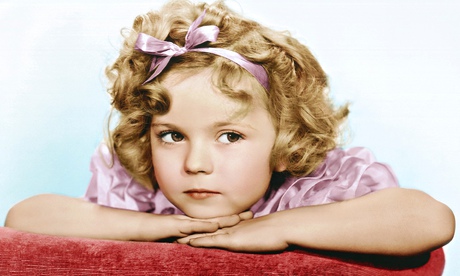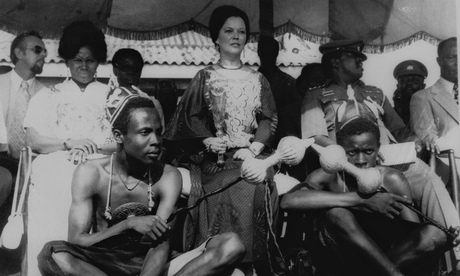Hollywood child star Shirley Temple dies aged 85
Shirley Temple, the American actress and former child star, has died at the age of 85
Shirley Temple, the American actress, singer and dancer, has died at her home in California from natural causes.
Temple, who began her film career in 1932 at the age of three, was surrounded by her family and caregivers when she passed away.
The actress, who appeared in 43 feature films including Heidi, Bright Eyes and Curly Top, passed away at her home in Woodside, in California.
Her death comes more than 40 years after she survived a battle with breast cancer. She was diagnosed in 1972 and was one of the first prominent women to speak openly about the disease after announcing she had undergone an operation to remove the tumour in interviews on radio and television.
Temple was most famous for her appearances in films as a child, winning an Oscar in 1935 aged just six. Her box office popularity sliding as she became a teenager. She eventually retired completely from films in 1950 at the age of 22 years old.
However, she regularly made guest appearances on television shows and also sat on the boards of several corporations and organisations including The Walt Disney Company and the National Wildlife Federation.
In 1967 she ran unsuccessfully for the US congress and was appointed as the US Ambassador to Ghana in 1974 and then later to Czechoslovakia in 1989.
At the age of 17, Temple married John Agar, an Army Air Corps sergeant. The couple had a daughter together, Linda Susan, before they divorced in 1950. Temple later married Charles Black, a US Navy intelligence office, in 1950. They had a daugher, Lori, in 1954.
A statement from her agent said: "She was surrounded by her family and caregivers.
"We salute her for a life of remarkable achievements as an actor, as a diplomat, and most importantly as our beloved mother, grandmother, great-grandmother, and adored wife for 55 years of the late and much missed Charles Alden Black."
Shirley Temple Black obituary
Cherubic child star of the 1930s who returned to public life as a US diplomat

Shirley Temple Black as a child actor: 'I stopped believing in Santa Claus when I was six. Mother took me to see him in a department store and he asked me for my autograph.' Photograph: Everett Collection/Rex
From 1934 to 1938, when she was at the height of her fame, Shirley Temple (later known as Shirley Temple Black), who has died aged 85, appeared in films as a bright-eyed, curly-topped, dimpled cherub, whose chirpy singing and toddler's tap dancing were perfect antidotes to the depression. "During this depression, when the spirit of the people is lower than at any other time, it is a splendid thing that, for just 15 cents, an American can go to a movie and look at the smiling face of a baby and forget his troubles," Franklin D Roosevelt stated in 1935, referring to the world's biggest and littlest star.
Temple's message was "be optimistic", the title of the song she sang in Little Miss Broadway (1938). Her biggest hit songs were On the Good Ship Lollipop, from Bright Eyes (1934), which describes a child's dream of a candy shop, and Animal Crackers in My Soup, from Curly Top (1935), sung at an orphanage while skipping between tables at lunch as the kids beat time with their knives and forks. (She was adept at playing plucky orphans.)
In Stowaway (1936), she displayed her considerable talents by impersonating Eddie Cantor, Al Jolson and Ginger Rogers (dancing with a Fred Astaire doll). She also demonstrated her dancing skills in numbers with the great tap-dancer Bill "Bojangles" Robinson in four musicals. His deceptively easygoing tapping proved the ideal accompaniment to little Shirley's shuffle, as in the Polly Wolly Doodle stair routine in The Littlest Rebel (1935).
No matter how one views Shirley Temple, and even for those who are allergic to precocious child performers, there has been no other child star before or since who has been as popular or demonstrated such extraordinary talents as singer, dancer and actor.
She was born in Santa Monica, California, to George Temple, a bank employee, and his wife, Gertrude (nee Krieger), who saw nascent talent in her three-year-old daughter. In 1931, Shirley was enrolled in a dance school in Los Angeles, where she was spotted by a studio agent. With her blonde hair styled in ringlets in imitation of the silent film star Mary Pickford, she was signed by Educational Pictures to appear in a series of one-reelers called Baby Burlesks, imitating films by Marlene Dietrich and other stars. Thanks to her ambitious mother, after bits in a few features Temple was offered a contract with 20th Century-Fox before she was six years old.
She immediately made an impression, bordering on the freakish, singing Baby Take a Bow, in Stand Up and Cheer! (1934), among seven movies in which she appeared in the same year. After only her first year in movies, she received a Special Oscar "in grateful recognition of her outstanding contribution to screen entertainment during the year 1934". She became a national institution: there were Shirley Temple dolls, toys and clothes (including a line in bathing suits). "I stopped believing in Santa Claus when I was six," she recalled. "Mother took me to see him in a department store and he asked me for my autograph."
Temple's first starring vehicle was Little Miss Marker (1934), based on a Damon Runyon short story. In the Runyon original, the tiny tot dances whenever she can, "holding her little short skirt up in her hands". In the film, Temple dances a lot, but keeps her skirt decorously in place.
John Ford directed her in Wee Willie Winkie (1937), based on a Rudyard Kipling story, but changing the sex of the little hero to suit Temple. Graham Greene, infamously, reviewing Wee Willie Winkie in the London weekly Night and Day, wrote: "Infancy with her is a disguise, her appeal is more secret and more adult … her neat and well-developed rump twisted in the tap dance: her eyes had a sidelong searching coquetry … watch the way she measures a man with agile studio eyes, with dimpled depravity. Adult emotions of love and grief glissade across the mask of childhood, a childhood that is only skin-deep … "
Fox sued and the case was settled in Temple's favour with the judge (a fan) deeming the libel "a gross outrage". Greene fled to Mexico, and the magazine was fined £3,500. The settlement remained in trust for Temple in a British bank until she turned 21, when it was donated to charity. Temple continued to dispense sweetness and light in Heidi (1937), Rebecca of Sunnybrook Farm (1938) and The Little Princess (1939), her first film in Technicolor. Yet, already she was beginning to show her age and would soon be past her prime.
Louis B Mayer wanted her to play Dorothy in The Wizard of Oz (1939), but when Fox wouldn't release her, the producer Arthur Freed insisted they try the 16-year-old Judy Garland (six years older than Temple). George Cukor, the second of four directors on the picture, got rid of the blonde wig and doll's makeup that Garland had been given, presumably to imitate Temple, and stressed the character's naturalness, a quality the younger star often lacked.
The Blue Bird (1940) was Fox's answer to MGM's The Wizard of Oz, but the film was an expensive failure and marked the end of Temple's star power. Temple's parents bought up the remainder of her contract and sent her, at the age of 12, to Westlake school for girls, an exclusive country day school in Los Angeles.
Contrary to the myth, Temple was not all washed up at 12, and made a fairly easy transition on screen from cute child to pretty teenager. David O Selznick put her under contract for two films in 1944, Since You Went Away and I'll Be Seeing You. In the former, the weepiest, longest and biggest hit about the home front during the second world war, Temple played Claudette Colbert's sassy daughter, and in the latter, another wartime romance, she was Ginger Rogers's chatterbox niece.
She is equally good as the teenager with the crush on Cary Grant in The Bachelor and the Bobby Soxer (aka Bachelor Knight, 1947) and worked for Ford again in Fort Apache (1948) as martinet lieutenant-colonel Henry Fonda's daughter, Philadelphia Thursday, probably the best film she made. Her young soldier suitor was played by a newcomer, John Agar, whom she had married three years previously.
 Shirley Temple Black, centre, as US ambassador to Ghana, watches a tribal dance performance at Cape Coast, Ghana, in 1975. Photograph: AP
Shirley Temple Black, centre, as US ambassador to Ghana, watches a tribal dance performance at Cape Coast, Ghana, in 1975. Photograph: AP
Their marriage ended in 1949, at the same time as she decided to retire from acting. The following year, she married the wealthy businessman Charles Black, who admitted to never having seen any of her films.
After bringing up her three children, she returned to the public eye in politics as Shirley Temple Black. A close friend of Richard Nixon andRonald Reagan (with whom she co-starred in That Hagen Girl, 1947), she became active in the Republican party in California, where, in 1967, she ran unsuccessfully for the US House of Representatives, voicing her support for the Vietnam war. She became US ambassador to Ghana (1974-76) and White House chief of protocol (1976-77), during Gerald Ford's presidency; foreign affairs officer with the state department under Reagan; and ambassador to Czechoslovakia (1989-92) under George HW Bush.
In 1972, Temple Black was diagnosed with breast cancer and underwent a mastectomy. She decided to announce it to the media, becoming one of the first prominent women to speak openly about breast cancer, and encouraging other women who required the surgery to follow her example without fear.
Her husband died in 2005. Temple Black is survived by their son, Charles, and daughter, Lori; and her daughter, Susan, from her marriage to Agar.
• Shirley Jane Temple Black, actor and politician, born 23 April 1928; died 10 February 2014


No comments:
Post a Comment